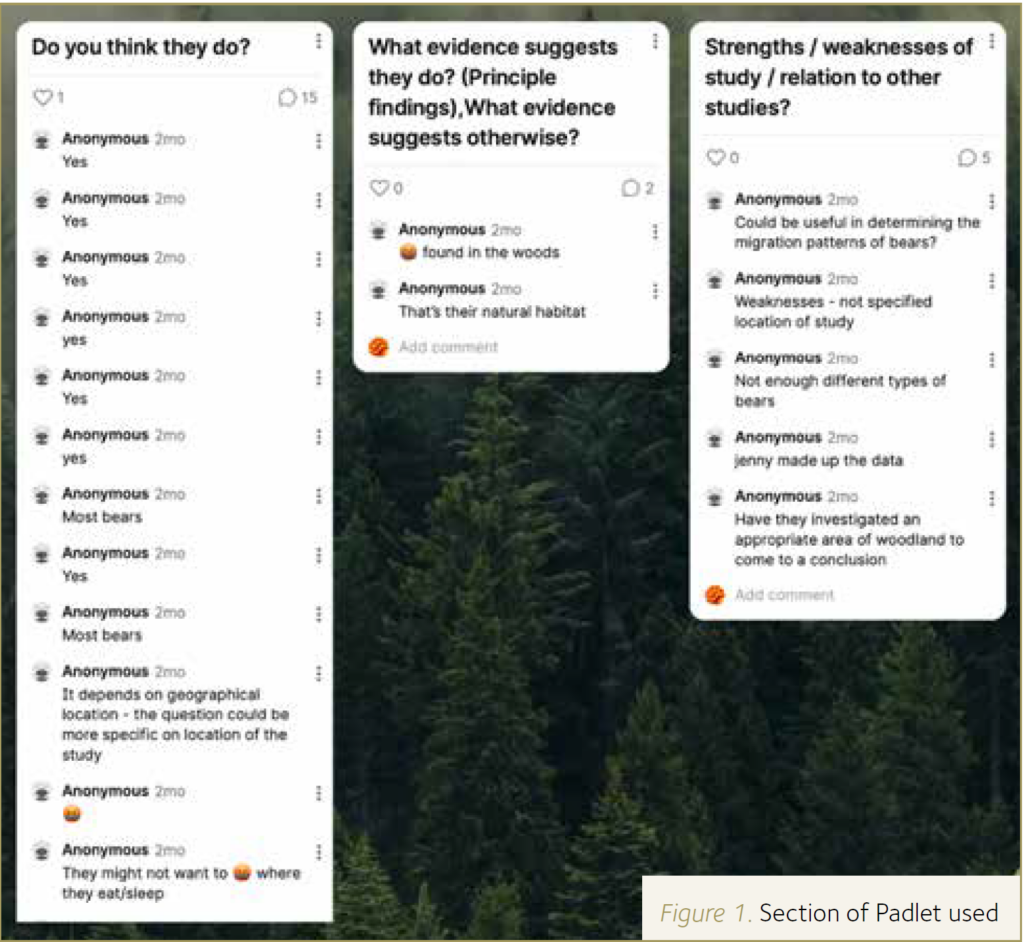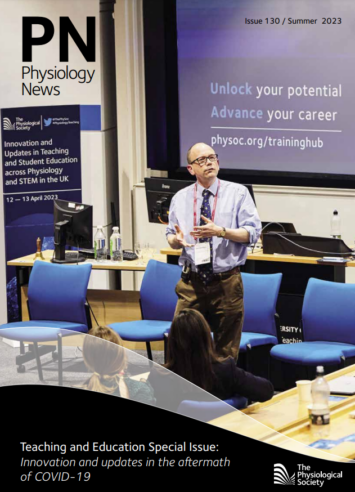
Physiology News Magazine
Do bears poop in the woods?
Developing an inclusive workshop to support understanding of critical analysis
News and Views
Do bears poop in the woods?
Developing an inclusive workshop to support understanding of critical analysis
News and Views
https://doi.org/10.36866/pn.130.18
Dr Jenny Moran
Keele University, UK
It should not perhaps have been such a surprise to hear the “thing” my final-year students would have really liked me to go through in a spare workshop slot was ‘what do we mean by critical analysis?’. It was apparent that despite efforts in various forms, across different modules and year groups, our often-extensive feedback was still not quite hitting the spot. There was a gap between what we as academics meant by the term “critical analysis”, our feedback surrounding it, and how students received and understood that feedback.
This caused me to reflect upon my own understanding of and ability to communicate the term. What do I want and expect to see within a discussion section? It still felt a little “I know it when I see it” but this is not helpful to students who are desperate to know what “it” is. The challenge was to clearly define what we expect/hope to see, and how we can convey that to students in a way that is accessible, and that they can and will engage with. Something that removes the fear and mental blocks affecting understanding of the task.
Identifying the block
I decided to try another approach within this session. Perhaps it was the science itself that created the block, preventing students from engaging and discussing their thoughts? The fear of being wrong and saying something daft stifled genuine debate within the group, and this session risked being no different.
They knew they didn’t understand, I knew they didn’t understand, but nobody would say it out loud. I thought I would try to lighten it up, make them laugh and relax enough to remove the threat and make it more fun, hence the title “Do bears poop in the woods?”
This is the sanitised title, not the actual one used within the workshop. That one was the more familiar, original phrase, and it had both shock (I said a swear word) and humour on its side. It was a phrase I was very familiar with and assumed students would be too. I soon realised, initially at least, they had no idea what I was talking about. It would seem only three out of 100+ students had heard the phrase before, with most looking mystified at best. However, this turned out to be a great ice breaker, they were now laughing at and with me, and were happy to give it a go.

Removing the fear factor
Before the big title unveil, I introduced critical analysis and we had a limited discussion surrounding previous feedback received and what they thought it meant. I explained how we often see lots of description of results within a discussion but little analysis. Still the “analysis” word though, what did I mean by it? What did I expect to see? How should/ could they be critical? Having reviewed the gap between what I think my feedback means and what they think my feedback means, I launched the bears.
I introduced the title and explained that we were going to look deeper at the day’s burning question “Do bears poop in the woods?” including some memes, tongue-in cheek newspaper articles and made-up data to support the task. I introduced the various sources of “evidence” and students began to talk between themselves about what they thought the answer was. The removal of risk lightened the workshop, there was no fear of getting the wrong answer. As there wasn’t really a right one anyway, they just explored the topic from all angles.
Padlet was used to capture and share their thoughts, and to help prompt greater thinking and discussion around the subject (Fig.1). They considered bear location; did they live in the woods? What about paths, grassland surrounding the woods, caves? Did bears get up in the night to return to the woods or poop in their cave? Did time of year affect them, was hibernating or mating season a factor? We looked at the sources of evidence supplied and began to evaluate their credibility, methodology, and quality of data. Students looked at my data and offered their thoughts regarding the rigour of my methods and the strengths and weaknesses of it and other evidence.
Boosting students’ confidence
We had fun, students discussed openly and had confidence to either shout out suggestions/thoughts or put them on the Padlet. The session helped them look at sources of information and data more critically, to evaluate if something earned “weight” within an argument, and how they could reflect this within their discussions.
Following the warm-up exercise we revisited a second-year lab report previously completed and considered an earlier cohort’s anonymised discussion sections. We pointed out good and less good parts, which examples were more descriptive, which began to analyse the data, and which were exemplary. Students happily critiqued the work and could demonstrate that they understood the feedback received and had a better understanding of what critical analysis looked like when done well.
In conclusion, introducing a low-risk, fun activity allowed students to openly discuss and explore a question, critically interpreting both data and supportive literature with a greater level of confidence and ability.
